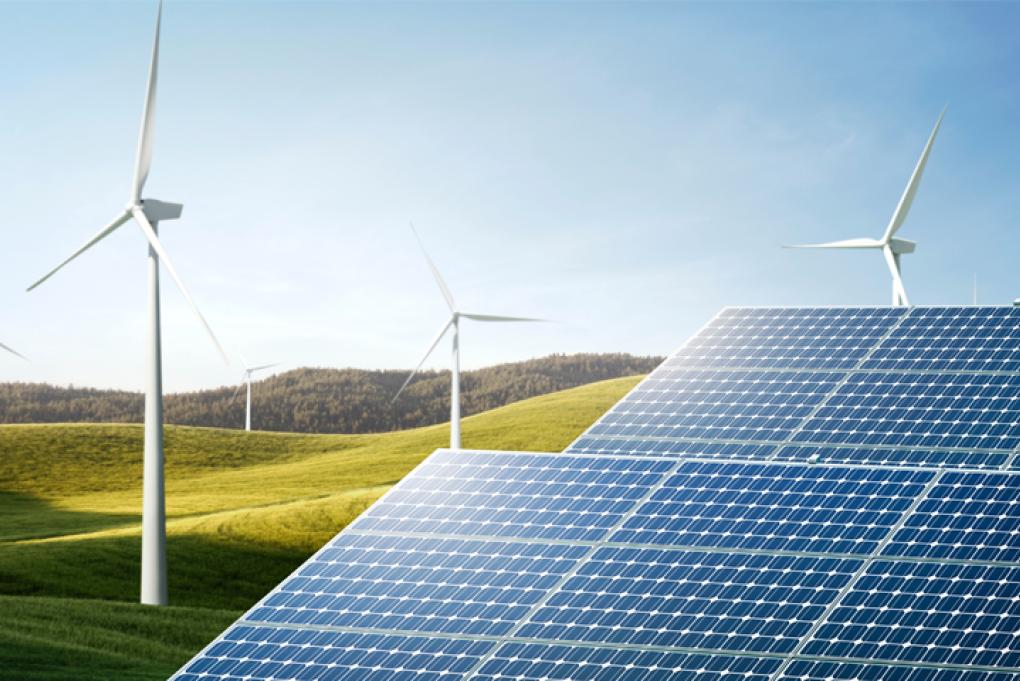
The benefits and costs of the energy mix of the future
For several years now, economic activity has grown faster than energy consumption thanks to technological improvements and the first steps being taken in the transition towards a new energy mix. What is more, this trend looks set to continue. According to projections by the US Energy Information Administration (EIA), global GDP will grow at an average annual rate of 3.1% over the next 12 years, while primary energy consumption will do so at an average rate of 0.9% per annum. These figures illustrate the anticipated improvements in energy savings, which will have significant implications in advanced economies, since it is precisely in those economies that energy consumption per capita is at its greatest (see first chart).
The new energy mix (see the article «The energy mix of the future» in this same Dossier) will be more efficient – in the energy extraction process, less energy will be consumed and the negative effects caused by pollution will be reduced – due to the greater weight of renewables and natural gas, at the expense of coal, which is less efficient and more polluting. Energy efficiency will bring various economic benefits, such as savings on energy bills for consumers, although it will also reduce production in some economic sectors. Nevertheless, the net result is expected to be positive. For example, according to estimates by Roula-Inglesi Lotz,1 a 1-pp increase in the share of renewables in the energy mix at the global level generates a positive impact on GDP growth of 0.089%. If we take into account the projections of the EIA, the share of renewable energies will increase from the current 13% up to 16% by 2030. This growth of renewable energies could potentially boost global GDP in 2030 by 0.3%, providing an additional economic incentive to carry out this transition.
If we focus our analysis on the EU, the developed economic region in which energy is used the most efficiently, there have been set various energy targets for 2030. In order to make progress in creating the Energy Union and to fulfil the Paris agreement, in 2018 the European Council revised its climate and energy targets for 2030: to cut greenhouse gas emissions by 40% compared to 1990 levels, increase the weight of renewable energies in energy consumption to 32% and improve energy efficiency by 32.5% compared to 2005 levels. The EU is making firm progress towards these goals, as it has reduced greenhouse gas emissions by 22% since 1990, it has increased the weight of renewable energies to 17%, and energy efficiency has risen by around 15%.2 Thus, the EU is on track to meet both the emissions target and that related to achieving a greater role of renewable energies, although it will need to stretch itself further if it wants to achieve the efficiency target.
If the EU reaches the strategic objectives of the new energy plan for the year 2030, what will be the macroeconomic impact? According to a study conducted by the European Commission, the investment in technological improvements aimed at increasing energy efficiency in order to achieve the targets set will have a very noticeable impact. In particular, if these objectives are achieved, it estimates that GDP in 2030 will be 1.3% higher than in a scenario with no changes in the energy mix. It also stresses that this transition must be gradual and be accompanied by flexible regulations that take into account the various players and economic sectors in order to avoid causing unwanted disruption in the market, as well as to allow both technology and human capital to adapt to the new environment.
What lies behind this figure? The positive impact on GDP will be generated, in part, by making use of resources that currently lie unused, such as by creating new jobs. In addition, consumers’ disposable income will increase as they will use a smaller proportion of their income to cover their energy consumption, thus allowing them to spend more on other products and services. Therefore, it is estimated that some 700,000 new jobs in net terms could ultimately be generated in 2030, which is no small amount.3
Despite the fact that the improvements in energy efficiency will have a positive impact on Europe’s production and labour market, the effects will most likely be highly disparate between different sectors of the economy. On the one hand, the utilities (water, electricity, etc.) and extraction sectors will see a reduction in output because there will be less demand for their products.4 On the other hand, sectors such as construction and engineering will benefit from investment in energy efficiency and will see an increase in their production. As a whole, the sectors that will benefit play a larger role in the European economy than those that will suffer, so the impact on aggregate income will be positive. The employment results at the sectorial level, meanwhile, will follow a similar pattern to that of production, albeit with one slight difference:5 the utilities sector is likely to end up employing more workers despite the drop in its production. This is because this sector plays a bigger role in Europe’s new energy mix within the field of renewable energies, which are relatively more labour-intensive than other energy sources.6
With regard to the trade balance, with the new energy mix, and thanks to the greater role of renewable energy sources, the EU will become less dependent on imports, especially oil and natural gas. This will allow it to improve its energy security (see article «The geopolitics of energy» in this Dossier for details), making it less vulnerable to the significant volatility in fossil fuel prices. By way of example, it is estimated that between 2018 and 2030, the new energy mix and improvements in energy efficiency achieved by EU countries will reduce the cost of fuel imports by between 175 and 320 billion euros each year. This is a considerable figure if we consider that, in 2017, 260 billion were spent on fuel imports.7
In short, in the 19th century and much of the 20th century, coal was the main source of energy. In the 20th century, and with the revolution in land transport following the invention of the car, oil gained importance until it became a key factor, capable of triggering economic turmoil like the crises in the 1970s and 1980s. The 21st century will be the century of natural gas and renewables. The change in the energy mix and th technological improvements that drive energy efficiency are a positive factor for the environment, but, in addition to that, there are also economic incentives to push for this transition. For this reason, it will be essential that countries live up to their commitments and continue to develop policies that promote a more sustainable pattern of economic growth.
Manel Pardo Fernández
1. See Roula-Inglesi Lotz (2016). «The impact of renewable energy consumption to economic growth: A panel data application». Energy Economics, 53, 58-63.
2. According to the latest data from the European Commission collected in 2016.
3. This takes into account the possible loss of jobs in the energy sector caused by the improvements in energy efficiency. See the article «Proposal for a Directive of the European Parliament and of the Council amending Directive 2012/27/EU on Energy Efficiency» by the European Commission 2016.
4. All in all, both revenues and production costs in this sector will be reduced, resulting in an ambiguous effect on business profits.
5. Other studies, such as the study «How Many Jobs?» undertaken in 2012 by the authors R. Janssen and D. Staniaszek in The Energy Efficiency Industrial Forum, show that every 1 million euros invested in improving energy efficiency in buildings allows 19 direct jobs to be created in the construction sector.
6. See the article «The macro-level and sectoral impacts of Energy Efficiency policies» by the European Commission 2017.
7. These estimates are highly sensitive to the evolution of the oil price.





